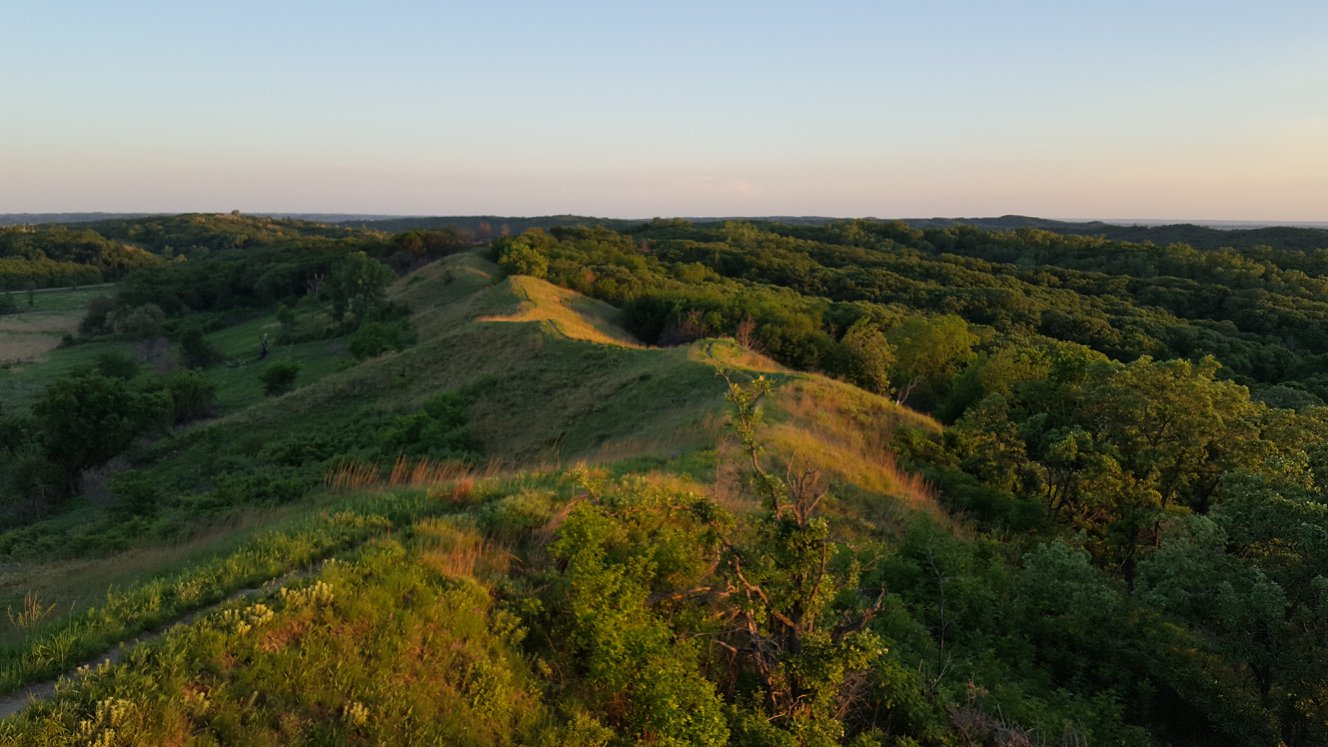by Kelly Madigan

In October and November of 2020, I walked a continuous route through the Loess Hills along the western edge of Iowa. It was roughly 270 miles of walking, and it took me about 6 1/2 weeks. As I walked, people began to reach out to me to explain that they had themselves dreamed of doing this same thing, and some had gone so far as to develop specific route maps. Multiple strangers asked if they could hike with me. Others told me their stories from these hills. Hundreds of people began following my Facebook posts and photographs about my experience. Invitations to speak with groups rolled in.
I started a Facebook group called the LoHi Trail and had 66 members in two days. There are now over a hundred members. There is a hunger for local long-distance walking trails. People are interested in a safe and continuous walking route through these hills. My sense is that there is a pent-up energy waiting to jump in and assist this in moving forward.
If a trail can sustainably be routed through the entire length of the Loess Hills, first through Iowa and later expanding to other states, that trail will assist many species. Likewise, it will draw attention to this vitally important and fragile landform that plays a central role in the Mississippi River watershed. It also lends itself to highlighting the discussion about wildlife crossings, and the importance of cores and corridors.
I am ready to leap forward, using the LoHi Trail and its hundred + identifiable stakeholders, to increase awareness of the Loess Hills, their staggering slopes, their multiple river valleys, the urgent need for conservation, their connection to the Gulf of Mexico. I know in part that involves bringing more people into the hills to have a direct experience, which in and of itself threatens the ecosystem. I hope to mitigate that threat through good practices.
I have no doubt that many people have walked a route similar to this in the past, even in modern times. (I haven’t found those people yet.) But I know for certain that I was able to take this walk because of decades of good conservation work done in the area before my time. My route took me from land protected by the state, to land protected by The Nature Conservancy, to land protected by county conservation boards, to land owned by the Iowa Natural Heritage Foundation. Money from Pheasants Forever, Ducks Unlimited, taxpayer dollars, habitat stamps and elsewhere all contributed to the conservation of these lands. While I want to say I am standing on the shoulders of those who have come before me, I am actually leaping from one shoulder to the next trying to bridge the gaps between these protected areas.
I believe we have an opportunity, through the interest currently being expressed around a LoHi Trail, to set a table where people from different walks of life (pun intended) and from different agencies can work with each other on their common goals, which would include preservation of the Loess Hills, conservation and access easements, public awareness and a growing public will toward protection, and increased economic opportunity for the poverty-stricken towns along the spine of the LoHi. I am seeking to explore and develop these opportunities.
The landform itself suggests the path forward. A spine ridge, the LoHi Trail, with multiple spur ridges (associated projects.) I will move forward, listening to the other stakeholders, developing framework that will aid in peoples’ ability to jump in, and seeking the best path that will allow the multiple interested parties and agencies to contribute what is theirs to contribute. I hope to develop a network of people and agencies that represent each of the seven counties.
I will report back in three months, with a request for a second grant. Ross and I have discussed the possibility of four grants over the course of 12 months, assuming sufficient progress is being demonstrated. In the meantime I may also approach you to consider funding associated projects.
I’m requesting an initial grant of $5000.
We are excited to accept this proposal from within the multi-state Loess Hills Area. Regarding succeeding grants, Kelly’s phrase “assuming sufficient progress is being demonstrated” is key, and for me that means moving toward the specific goals of BIG RIVER CONNECTIVITY. It must be clear in three months that her reference to “these hills” emphasizes the flourishing of existing and potential wild things. By March of 2021 Reconnect-Restore-Rewild and Cores-Corridors-Crossings will have become commonplace in this public conversation, and participants will be familiar with the permanent Wetlands Reserve Program (WRP) as a model for uniting landowners and government to set aside steep slopes and frequently flooding river bottoms. I am looking forward to the evolution of Kelly’s project.
– Roger Ross Gipple
